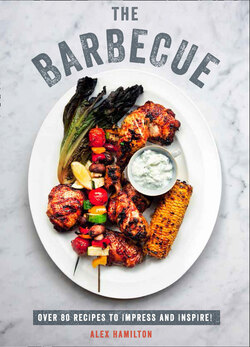Читать книгу The Barbecue - Alex Hamilton - Страница 7
ОглавлениеGAS VS CHARCOAL
CHARCOAL
Purists prefer charcoal for the smoky flavour, and I personally love that you can chuck rosemary, thyme, bay, sage or oregano on to the coals for a wonderful herbal scent as you cook. A kettle or lidded barbecue is really helpful for cooking your food evenly – if you’re just using a very simple open grill or disposable barbecue, a really large inverted metal bowl will do at a pinch.
You will need: firelighters and long matches, or a long-handled lighter, as well as the charcoal. Set a couple of firelighters or plenty of scrunched-up paper under the coal, light them, then let the coal burn (20–25 minutes for lumpwood, up to 40 for briquettes) until they’re evenly glowing and chalky grey – then you’re good to start putting the food on.
Quick-cook items can be done over the coals (like things on sticks or steak). If you’re cooking items for longer, like a whole chicken or thighs and drumsticks, you’ll want to carefully move the coals to one side, and cook over the indirect heat on the other side of the barbecue.
Bear in mind, if you’re barbecuing for a long time, you will want to have another load of hot coals ready to tip onto the barbecue for when your first lot has died down – this is easy to get going in an inexpensive chimney starter.
GAS
For ease and convenience, gas is incredibly helpful. You certainly get a slightly different, less smoky finish on your food, but with the lid down the barbecue will heat up in under 10 minutes, and you can regulate the intensity of the flame just by turning the dial – very hassle-free. You may find, depending on your model, that there are hot and cold spots, so, using something fairly inexpensive like grilled vegetables, do a little test moving your food around to see where the hot and cool spots are.
